Cedar Rapids
In 1838 the town of Columbus was established on the banks of the Cedar River. By 1841 the settlement had expanded to a few hundred people and the site was re-surveyed and renamed Cedar Rapids after the rapids on the river at town. Growth accelerated in 1871 after a meatpacking company was established in the town. Aviation pioneers Orville and Wilbur Wright were residents from 1878 to 1881 when their father, a bishop with the Church of the Brethren, was assigned to a post in Cedar Rapids. In 1895 the Muslims started to arrive in the area from the Bekaa Valley in modern day Lebanon and Syria. The first mosque in North America known as the Mother Mosque of America was completed in Cedar Rapids on on February 15, 1934. The first Islamic cemetery North America followed in 1948. Cedar Rapids is home to the largest cereal mill in the world, Quaker Oats, built in 1873 and the city has consistently had a higher percentage of exported products per capita than anywhere else in the United States. It is now the second largest city in Iowa.
Veterans Memorial Building (and former City Hall)
This building underlines the importance of the Cedar River to the city. In March 1925 a petition was sent to the City Clerk proposing the construction of a Memorial Building and two months later residents voted in favour of the proposal. The site chosen was Mays Island, a small island in the Cedar River. In order to make the new building financially viable, the plans incorporated the City Hall into the Memorial Building. The building was designed in the Beaux-Arts style with a cenotaph on top that is modelled on the one in London. The Memorial Building was severely damaged during the 2008 flood, which forced the City administration to move out. At the time we took this picture in 2010 the building was still closed for repairs but it finally reopened in April 2014. The City administration decided against returning to their former home, instead they relocated to the former Federal Courthouse building. The renovated Memorial Building houses a military museum, a 2000 seat auditorium, a conference centre and facilities for Veterans. It has also been modifed to make it less vulnerable to flooding.
Click on Minimap to navigate
Theatre Cedar Rapids, 3rd Street
From 1925 Grant Wood and some friends staged occasional small theatre productions in his studio in Turner Alley. They started a tradition for community theatre in Cedar Rapids that continued through to World War II. In 1948 the group re-established itself under the name ‘The Footlighters’, performing in various locations such as the YMCA and Coe College. In 1955 they moved to their first permanent home, the Old Strand Theatre, a former cinema that opened in 1912. They also change their name to the ‘Cedar Rapids Community Theatre’. The Iowa Theatre opened in June 1928 as a cinema and as a venue for vaudeville shows but it closed in 1983. The building was donated to community theatre group, who changed their name to Theatre Cedar Rapids. The theatre was damaged in the floods on 2008 but reopened in February 2010.
DLU141216


To move forwards or backwards through the Iowa trail click the arrows above, or select your next destination on the Minimap.
Cedar River & Quaker Oats Factory
The Cedar River gained its name from the large number of Red Cedar trees found along its banks. This idyllic vision of a tree-lined river was abruptly quashed on June 13, 2008 when the river flooded to a record level of 9.49 metres (31.12 feet), more than 50% higher than the previous record. More than 14% of the city was affected by flood waters, including 1,126 city blocks of which 561 were severely damaged. Fortunately, no lives were lost. We visited Cedar Rapids just over 2 years after the floods and by then there were few obvious signs of the devastation.
Brucemore
By the late Victorian era Cedar Rapids had grown into a major industrial and food processing centre. Thomas McElderry Sinclair owned a successful meatpacking business and in 1871 he opened a new plant in Cedar Rapids. It quickly grew to become the largest meatpacking plant in Iowa. Sadly, Thomas died following an accident at the plant in 1881. In 1884 his widow Caroline began construction of a Queen Anne style mansion called Brucemore just 3 kilometres (2 miles) from downtown Cedar Rapids. She also purchased a home in Philadelphia so that her children could go to school there, but the family lived in Brucemore outside of term time. In 1906 Caroline traded homes in Cedar Rapids with George and Irene Douglas. The Douglas family owned Douglas & Company, a Cedar Rapids cornstarch plant, as well as Quaker Oats. The Queen Anne style was by then out of fashion so the Douglases extensively modernised Brucemore. Irene lived in the house until her death in 1937, 14 years after her husband. The Brucemore estate passed to her eldest daughter, Margaret Douglas Hall. She was married to Howard Hall, the co-founder and president of Iowa Steel & Iron Works and of Iowa Manufacturing. Margaret never had any children. so when she died in 1981 she left Brucemore to the National Trust for Historic Preservation. They have maintained Brucemore as a House Museum and community cultural centre. Click Tab 2 to see the swimming pool at Brucemore.
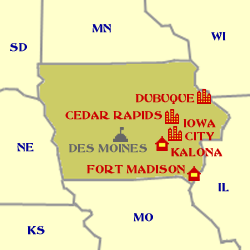

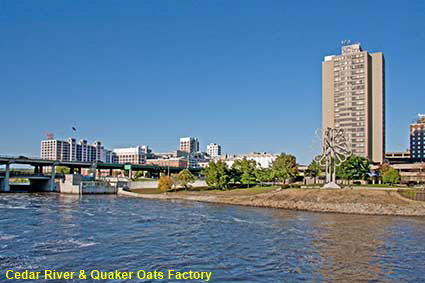
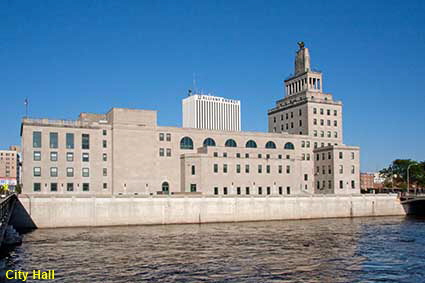
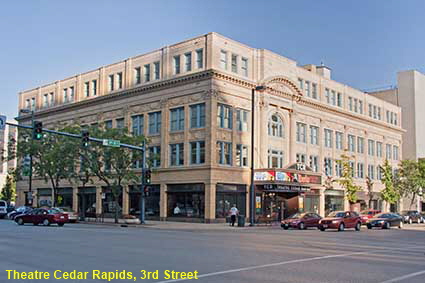
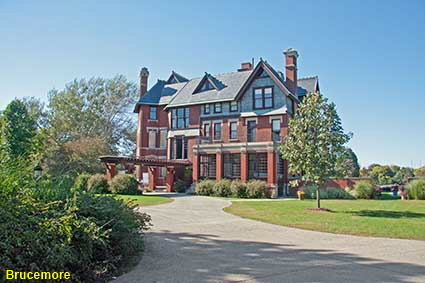
© Mike Elsden 1981 - 2023
The contents of this page may not be reproduced in full or in part without permission